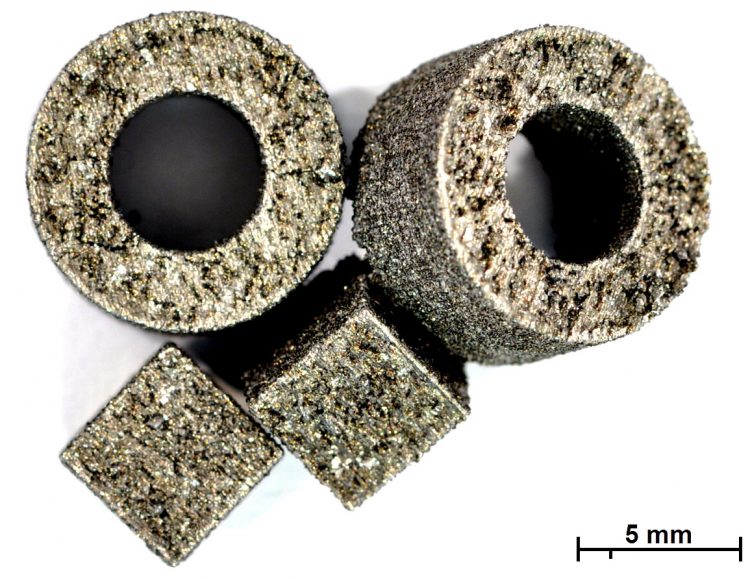Super magnets from a 3D printer

The research team has now succeeded in producing miniaturised supermagnets using laser-based 3D printing. Image: IMAT – TU Graz
Permanent magnets are incorporated into a number of mechatronic applications.
Traditional manufacturing methods such as sintering or injection moulding are not always able to cope with increasing miniaturisation and the resulting geometric requirements for magnets, and this is a trend which is sent to continue in the future.
Additive manufacturing processes offer the necessary freedom of design.
The research team, involving Prof. Dr. Jörg Franke from the Institute for Factory Automation and Production Systems at FAU, has now succeeded in creating super magnets using laser-based 3D printing.
Metallic powder of the magnetic material is added layer by layer and the particles are joined by melting.
The process allows magnets to be printed with a relatively high density at the same time as controlling their microstructure.
This allows researchers to tailor the magnetic properties to suit the required application exactly.
Further information
Prof. Dr. Ing. Jörg Franke
Institute for Factory Automation and Production Systems
Phone: + 49 9131 85 27569
joerg.franke@faps.fau.de
Media Contact
All latest news from the category: Machine Engineering
Machine engineering is one of Germany’s key industries. The importance of this segment has led to the creation of new university degree programs in fields such as production and logistics, process engineering, vehicle/automotive engineering, production engineering and aerospace engineering among others.
innovations-report offers informative reports and articles covering technologies such as automation, motion, power train, energy, conveyor, plastics, lightweight construction, logistics/warehousing, measurement systems, machine tools and control engineering.
Newest articles

Zap Energy achieves 37-million-degree temperatures in a compact device
New publication reports record electron temperatures for a small-scale, sheared-flow-stabilized Z-pinch fusion device. In the nine decades since humans first produced fusion reactions, only a few fusion technologies have demonstrated…

Innovative microscopy demystifies metabolism of Alzheimer’s
Researchers at UC San Diego have deployed state-of-the art imaging techniques to discover the metabolism driving Alzheimer’s disease; results suggest new treatment strategies. Alzheimer’s disease causes significant problems with memory,…

A cause of immunodeficiency identified
After stroke and heart attack: Every year, between 250,000 and 300,000 people in Germany suffer from a stroke or heart attack. These patients suffer immune disturbances and are very frequently…





















